- Home
- Don Pendleton
Omega Cult Page 2
Omega Cult Read online
Page 2
The waitress came with Bolan’s steaming plate and he dug in after he checked his watch once more. From long experience, he knew it would take him half an hour, give or take, to finish his lunch. If Brognola had not appeared by then...
A shadow fell across his table.
Bolan glanced up, found Brognola standing over him, frowning. “Sorry I couldn’t call,” he said. “This thing is getting out of hand.”
The big Fed sat across from Bolan at the small table for two. The waitress spotted him and circled back in the hope of doubling her tip. Brognola eyeballed Bolan’s plate and said, “I shouldn’t, but I’ll have the same. Light beer for me.”
When she was gone, Brognola took off his fedora, set it on a corner of the table to his left, and said, “Three guesses why we’re here.”
“Los Angeles,” Bolan replied.
“Got it in one. Have you been following what’s going on?”
“Only what’s on the news.”
“Tip of the iceberg,” Brognola declared. “We’ve got more than the media, as usual. It’s not as wacky as the crap you’ll find if you start Googling, but it’s bad enough.”
“Tell me.”
“First up...” The big Fed hesitated as his beer arrived. He sipped it and then forged ahead. “First up, all three of the known perps were South Korean nationals. They all applied for green cards through the US Embassy in Seoul, over a span of thirteen months, and got approval from the INS as LPRs—lawful permanent residents. All settled in LA and nailed down jobs with different companies. First glance, none seemed to be acquainted with the others.”
“But at second glance?” Bolan inquired.
“As you’d imagine, we’ve put all their lives under a microscope, cooperating with South Korea’s National Intelligence Service and their National Police Agency. None of the doers resided in Seoul for more than a few weeks before they applied for their visas. All three came from different provinces. No shared addresses or employment in the capital. We did find something, though.”
“Which is?”
“Are you familiar with a cult called Omega Hoejung?” Brognola asked.
“It doesn’t ring a bell.”
“In English, that translates to the Omega Congregation, as in final. It was founded nineteen years ago by Shin Bon-jae, a self-made billionaire from Seoul who’s got his fingers in a couple thousand different pies from manufacturing and shipping on to journalism. In the States, he runs the Washington Inquirer, giving any major piece of news a right-wing twist. He sells himself as strictly anticommunist, in line with Rhee Syng-man from the Korean War, through Park Chung-hee, on down to Park Geun-hye. He hates the North Korean crowd and likes to talk about reunifying the Koreas under what he calls ‘benevolent autocracy.’ Dictatorship, in other words.”
“What’s the religious angle?” Bolan asked.
“That’s been the major snag for people trying to decide what Shin’s really about. He’s both a guru and a CEO, which seems to be a contradiction, but he’s made it work for him so far. Worldwide, he has an estimated quarter-million followers, most of them living in East Asia. But they have a good-size group in Russia—five, six thousand by most estimates—and you can find them all around the States. Maybe another six or seven thousand known to follow Shin’s lead work in upper levels of his companies and follow all the Congregation’s rituals. It’s tax exempt on this side of the water, naturally, which is helpful when it comes to money laundering.”
“For what?”
“Pure speculation at this point. None of his people have been jailed for anything, as far as I can tell, but ATF reports persistent rumors of arms smuggling. Interpol and ICE suspect Shin’s got a hand in human trafficking, moving his people here and there around the world without the legal paperwork.”
“And this ties into LA how?”
“All three perps paid their dues to the Omega Congregation,” Brognola replied. When Bolan frowned, he added, “Sure, I know. Coincidence, some might suggest. And if it was a bigger sect—Buddhism or Catholicism, say—I might buy that. But from the records I’ve obtained, they only have about six hundred members of the Congregation anywhere in California. What are the odds that three of them would get their hands on sarin and coordinate attacks on the same day?”
“I’d call it slim to none,” Bolan replied.
“Which brings us here.” The big Fed paused again to thank the waitress for his meal and watched her walk away before resuming. “The Omega Congregation has its US headquarters in San Francisco, led by Lee Jay-hyun. Officially, he ranks below the founding leader as a je yeonghon. That’s ‘second soul.’ A rank applied to what you might call generals of the sect, each one in charge of operations for a given nation. Shin Bon-jae rules over all as cha ui yeonghon, the ‘primary soul.’ According to the Congregation’s doctrine, he was visited by Jesus Christ in person on his sixteenth birthday—Shin’s, not Christ’s—and was anointed as the leader of a new age leading to the Final Days.”
“So, an apocalyptic cult,” Bolan observed.
“We’ve seen how those worked out before, from Tokyo to Waco, Heaven’s Gate on to the Order of the Solar Temple. Some just kill themselves. Others, like Aum Shinrikyo in Japan, can’t wait to spread the death around.”
“How does that help a self-made billionaire?” Bolan inquired.
“Depends on what he’s thinking underneath. Is he an anticommunist in fact or something else? How would he profit from kick-starting the Apocalypse? There’s money in disasters if you play your cards right—think about the movement to rebuild a new, whiter New Orleans after Hurricane Katrina—and he might have something cooking with the North Korean crowd.”
“Where’s that come from?”
Brognola set his fork down long enough to take a CD from his pocket, sliding it across the table toward Bolan. “You’ll find details on there,” he said. “Long story short, the FBI thinks Lee Jay-hyun’s been meeting with a character named Park Hae-sung in Frisco. He’s another businessman from Seoul, ostensibly, but the Bureau and the Company suspect he’s working for the DPRK’s State Security Department.”
DPRK, Bolan knew, being the Democratic People’s Republic of Korea. Staunchly communist since 1946 and presently dominated by its roly-poly Supreme Leader, best known for sweeping human rights violations, random executions of his rivals and erratic threats of global nuclear holocaust.
“I’m guessing step one would be San Francisco?”
“That’s if you’re taking the mission,” Brognola answered.
Bolan pocketed the CD. “Sounds like it’s worth a closer look.”
“I ought to tell you this could wind up going transpacific.”
“Following the prey’s a part of hunting,” Bolan said.
Ronald Reagan Washington National Airport
BOLAN DROPPED HIS rental car in the agency’s parking lot and found his one-way ticket westward waiting at the airline’s window with three hours to spare before takeoff. He made it through security, booting up his laptop at the request of an inspector in a rumpled uniform, then hiked down to his flight’s appointed gate and found himself a corner seat, placing his carry-on in the adjacent chair so no one could sit next to him.
An earpiece for the laptop solved his problem with potential eavesdropping as Bolan slipped Brognola’s CD-ROM into the laptop’s slot and waited for its menu to appear. Four files popped up a moment later, labeled A through D.
The first broke down the history of the Omega Congregation, founded in July of 1998 by Shin Bon-jae. It started small, a curious religious sect that merged Shin’s nationalist stance on politics with the peculiar notion—previously under wraps it seemed—that he’d been visited by Jesus Christ in person, not just once but half a dozen times. The risen Lord allegedly suggested, then insisted, that Shin share his message with the masses, using the
financial blessings already bestowed on him by God, to rally wide support for a reunion of the two Koreas after half a century. The chief means of achieving that reunion, Jesus said—through Shin—would be an arduous campaign of prayer.
Over time, a list of right-wing politicians had signed on to the Omega Congregation’s cause, lending their names and paying dues according to the status of their salaries. Meanwhile, the movement spread through lower levels of society, encouraged tacitly by Seoul’s prevailing leaders as a means to counteract threats and demands from its northern rival Kim Jong-il and his successor. The odd part, given its specific politics, was the Omega Congregation’s subsequent expansion through East Asia, into Europe, North America, and even to Australia, where a small but thriving chapter operated from an office suite in Melbourne.
Initially bankrolled by founder Shin via a paper company created for that purpose, the Omega Congregation was a self-supporting entity by August 1999, turning a profit—which, allegedly, it spent on missionary work—by April of 2000. Granted tax exemption as a bona fide religion in the States, it skated on the thin ice of political persuasion but survived investigations by Internal Revenue in 2002, ’04 and ’09. At that point high-priced lawyers formally protested federal harassment of the cult and won their case in 2011.
And it had been smooth sailing after that—at least, until three members of the sect released sarin nerve gas in LA
The list of dead, including terrorists, had reached 217 when Bolan checked the internet after arriving at his airport gate. At least three dozen more victims were critical, clinging to life in ICU, while close to ninety others were described by hospital authorities as being in “stable but guarded” condition.
It was not the worst terrorist attack in US history, but coming out of nowhere as it had, without a hint of any links to radical jihadists or homegrown fascist malcontents, it had taken the country and its leaders by complete surprise. No one had been alert for trouble from Korean immigrants, much less from those allied with a conservative religious sect.
File “B” relayed the history of Shin Bon-jae in greater detail than Brognola had provided over lunch. Born to humble parents in Gyeonggi Province in 1958, Shin made his way to Seoul as a teenager, worked various jobs to make ends meet, then came up with a stake from who knew where to buy a failing carpet factory. He’d turned the company around in record time and soon expanded. First to trucking, as a mode of transportation for his product, then diversifying into other types of manufacturing, founding a two-ship transport line that had expanded over time a hundredfold, and making lucrative investments with advice from certain wealthy friends in industry and politics. His first newspaper, Seoul’s Truth in Action, had been launched in 1970, spreading globally over the next twelve years as Shin founded affiliated papers on six continents, in nineteen languages.
His great conversion to religion, never indicated in his public statements previously, came a week after Shin’s fortieth birthday. On July 4, 1998, he was prepared to share the word. He put his money where his mouth was at the start, and was rewarded over time by one more profit-making branch of his empire. How many other bootstrap billionaires were ranked among the richest men on Earth and heralded by followers as an enlightened mouthpiece of Almighty God?
Thus far, there’d been no hint of Shin or his hand-picked lieutenants preaching violence, although the Congregation’s doctrine did maintain that the reunion of fractured Korea might require apocalyptic sacrifice. In Seoul, such rhetoric was not unusual: leaders of South Korea had been talking war since 1948 and—unknown to most Americans—illegal border crossings by the troops of first president Rhee Syng-man had motivated North Korea’s Kim Il-sung to order an invasion of the South in 1950, starting the Korean War and ultimately drawing Red China into the fight. Outside Korea, Congregation speakers kept it on the down-low, pressing would-be members to donate whatever they or their extended families could spare to help the cause.
File “C” picked up with Lee Jay-hyun, Shin’s front man in America. At thirty-two, he’d climbed the Congregation’s ladder rapidly, from raw recruit to office aide in Seoul, promoted once again after he’d saved Shin’s life from a demented gunman in October 2002 outside the cult’s Heavenly Palace in central Seoul’s Jongno-gu district. Elevated to the august rank of second soul, Lee soon turned up in San Francisco with a work visa identifying him as a religious missionary. One year later that had been converted to a green card naming him as a permanent resident of the US.
Lee’s church and headquarters in San Francisco was located in Ashbury Heights, on a hill south of the once-notorious Haight-Ashbury neighborhood. Bolan had pegged it as one of his first stops when he reached the coast.
File “D” was sparse but interesting, focused on Park Hae-sung, reputed businessman from Seoul, suspected—as Brognola had explained—of being an illegal agent of North Korea’s State Security Department. Since North Korea had no consulates in the United States, the FBI and CIA had no hard proof of any links between Park and the SSD, but agents of the National Security Agency claimed he was in contact with Pyongyang via covert telephones and radio broadcasts, pending decryption that would give an indication of their contents.
Evidence that would have bolstered an indictment: zero.
It was one more thing for Bolan to determine when he got to San Francisco, and he hoped he wouldn’t leave his heart—or body—there when he was done.
2
San Francisco International Airport
Bolan’s nonstop flight from Reagan National to Frisco by the Bay consumed five hours’ airtime, plus thirty minutes for takeoff and landing. He’d covered 2,439 miles and four time zones, touching down officially two hours after takeoff from Virginia. Add another hour to get off the plane, collect his rented Volkswagen Passat and find his way out of the airport, and he still felt as if he’d lost time.
Unknown to Bolan’s airport rental agent, the Passat she gave him had been arranged through Stony Man with a contract associate in San Francisco. The four-door sedan came fully loaded from the factory, but in its trunk were certain items not anticipated by the manufacturer or rental company. Bolan discovered them after he pulled into the deserted corner of a shopping center parking lot in San Bruno and opened the trunk.
The trunk contained two standard duffel bags. In one, he found an M-4 carbine with a telescoping stock, an Advanced Combat Optical Gunsight, an AN/PEQ-2 Target Pointer/Illuminator/Aiming Light and twenty spare 30-round magazines filled with 5.56 mm NATO rounds.
The second bag held Bolan’s sidearms and the holsters to support them: a DE44CA—Desert Eagle .44 Magnum California—the Israeli pistol’s only model certified for sale inside the Golden State, and a Beretta 93-R selective-fire handgun. While deemed obsolete by military purists, last manufactured in 1993, the 93-R had served Bolan well in the past. Included in the second bag were two dozen 20-round Beretta magazines and an equal number of 8-round mags for the big Desert Eagle.
By the time he left San Bruno, westbound into San Francisco proper, Bolan was dressed to kill with the Beretta in fast-draw armpit leather, gun beneath his left arm, two spare magazines beneath his right. The other weapons rode behind him on the Passat’s floorboards, within arm’s reach of the driver’s seat. If he was stopped by the police—unlikely, but an outside possibility—his driver’s license from Virginia, made out to “Matthew Cooper,” would withstand a visual inspection and a check for warrants through the FBI’s National Crime Information Center. If the probe went any further, his employment record as a sales rep for a pharmaceutical concern in Arlington was also verifiable by phone, routed to Stony Man.
The point, of course, was not to be discovered, stopped or questioned by authorities.
Right now, though, Bolan’s problem was a church of sorts, allegedly connected to the massacres committed by three of its members in Los Angeles, 347 miles southeast of San Francisco. That, and the all
eged link between Lee Jay-hyun’s Omega Congregation and a rumored spy for North Korea.
Bolan personally had no quarrel with any doctrine, sect or cult until they crossed the line belief into criminal action. No churchgoer himself, he had a broad view of morality as such and privately disagreed with many statutes punishing crimes the law labeled malum prohibitum—“wrong” simply because they were prohibited—rather than malum in se—“evil in itself.” He did not disapprove of gambling, prostitution and the like for their own sake, but cracked down hard wherever victimless crimes were employed by evil men to fatten felonious coffers and promote more sinister activities: extortion, murder, human trafficking, enslavement of the innocent with drugs or terrorism.
And when Bolan drew a line, it was a dead line in the classic Old West sense.
His enemies who crossed it generally wound up dead.
Ashbury Heights, San Francisco
AMERICAN HEADQUARTERS FOR the Omega Congregation stood on Delmar Street, west of Buena Vista Park. Stately homes in the neighborhood listed with Realtors for a median price of $2.6 million and normally sold for an average $1.2 million after various negotiations, light-years away from nearby Haight-Ashbury with its 1967 Summer of Love reputation and its swift decline thereafter into hard drugs, occupation by the outlaw biker gangs and frequent raids by the police and Feds. The 1970s brought renovations and an unexpected renaissance of standup comedy, but “Hashbury” still lagged far behind its gentrified southern neighbor in terms of outward style and dependable property values.
Ashbury Heights, in short, had been the perfect place for Lee Jay-hyun to plant the seeds of the Omega Congregation and watch them bloom.

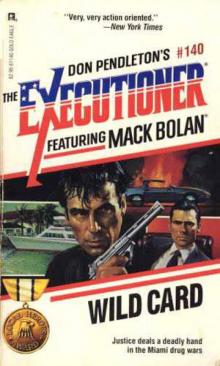 Wild Card
Wild Card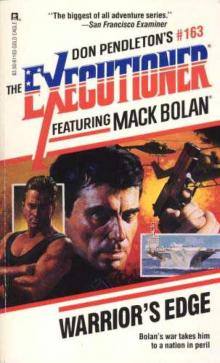 Warrior's Edge
Warrior's Edge Blood Vortex
Blood Vortex Lethal Vengeance
Lethal Vengeance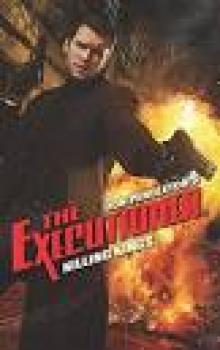 Killing Kings
Killing Kings Cold Fury
Cold Fury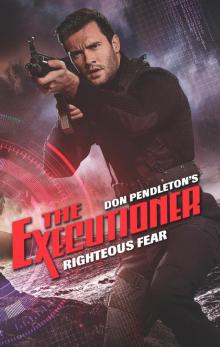 Righteous Fear
Righteous Fear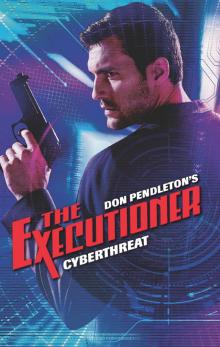 Cyberthreat
Cyberthreat Stealth Assassin
Stealth Assassin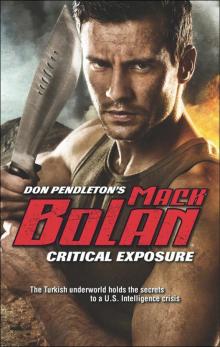 Critical Exposure
Critical Exposure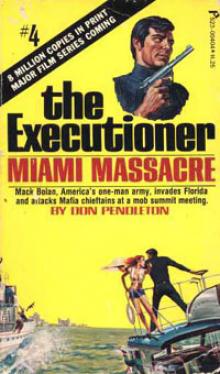 Miami Massacre te-4
Miami Massacre te-4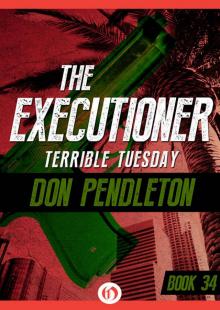 Terrible Tuesday
Terrible Tuesday Dying Art
Dying Art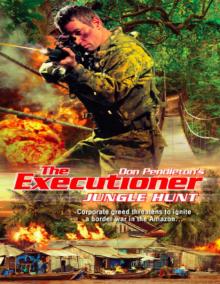 Jungle Hunt
Jungle Hunt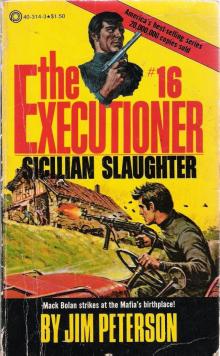 Sicilian Slaughter
Sicilian Slaughter Throw Down
Throw Down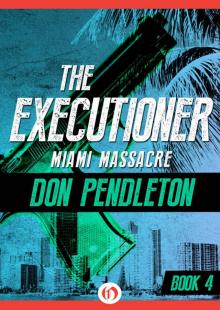 Miami Massacre
Miami Massacre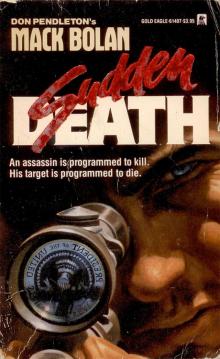 Sudden Death
Sudden Death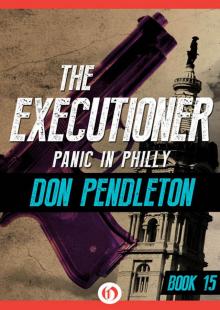 Panic in Philly
Panic in Philly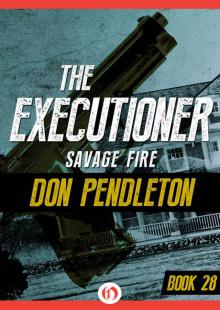 Savage Fire
Savage Fire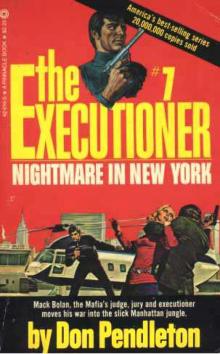 Nightmare in New York te-7
Nightmare in New York te-7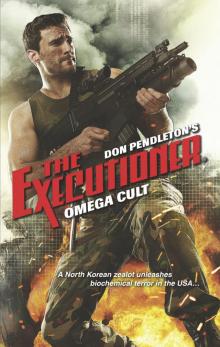 Omega Cult
Omega Cult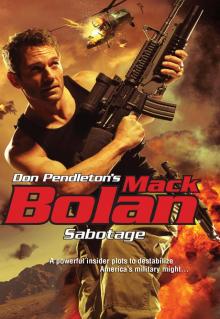 Sabotage
Sabotage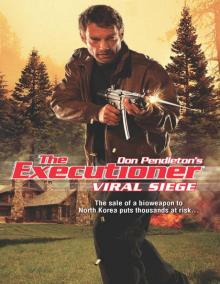 Viral Siege
Viral Siege War Tactic
War Tactic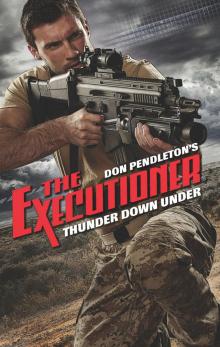 Thunder Down Under
Thunder Down Under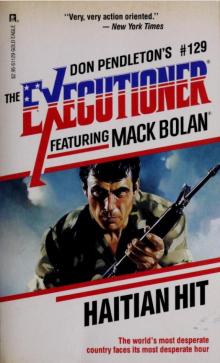 Haitian Hit
Haitian Hit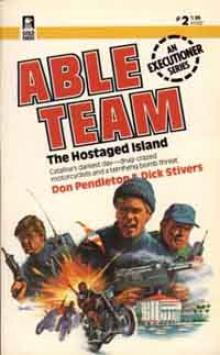 The Hostaged Island at-2
The Hostaged Island at-2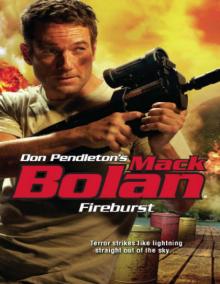 Fireburst
Fireburst The Killing Urge
The Killing Urge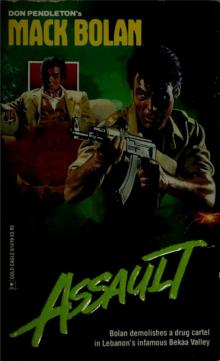 Assault
Assault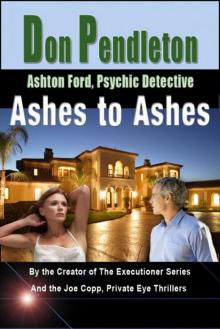 Ashes To Ashes: Ashton Ford, Psychic Detective
Ashes To Ashes: Ashton Ford, Psychic Detective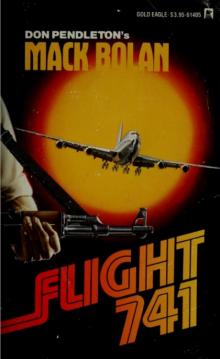 Flight 741
Flight 741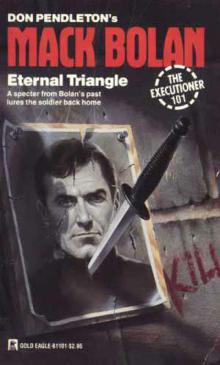 Eternal Triangle
Eternal Triangle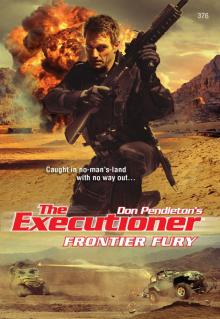 Frontier Fury
Frontier Fury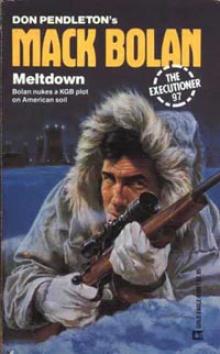 Meltdown te-97
Meltdown te-97 Chicago Wipeout
Chicago Wipeout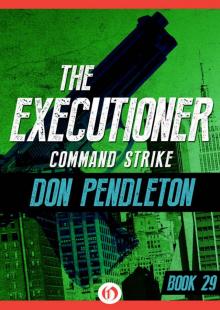 Command Strike
Command Strike Nightmare Army
Nightmare Army Ivory Wave
Ivory Wave Combat Machines
Combat Machines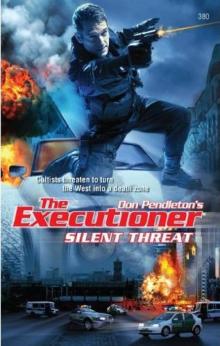 Silent Threat
Silent Threat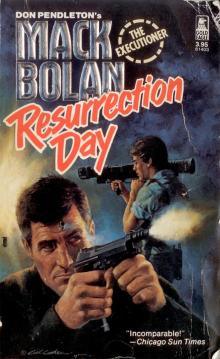 Resurrection Day
Resurrection Day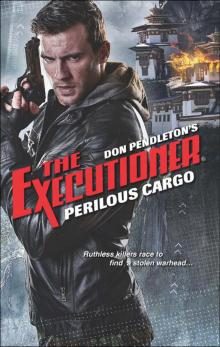 Perilous Cargo
Perilous Cargo Syrian Rescue
Syrian Rescue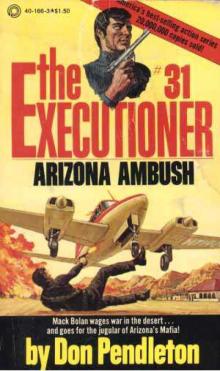 Arizona Ambush te-31
Arizona Ambush te-31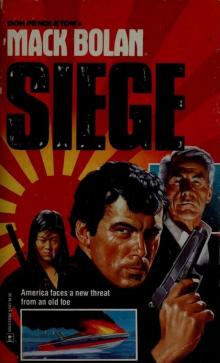 Siege
Siege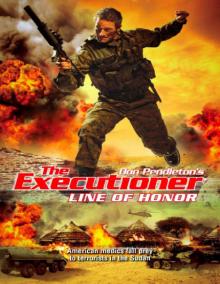 Line of Honor
Line of Honor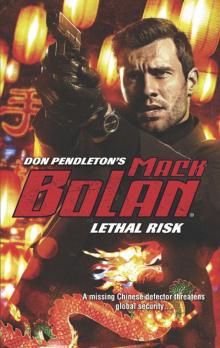 Lethal Risk
Lethal Risk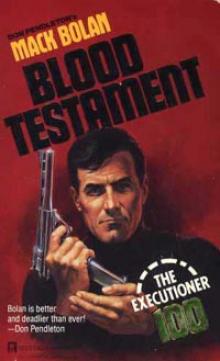 Blood Testament te-100
Blood Testament te-100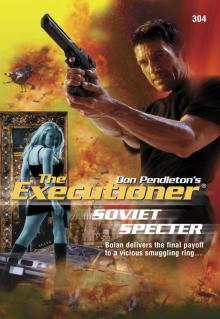 Soviet Specter
Soviet Specter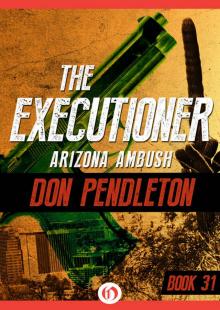 Arizona Ambush
Arizona Ambush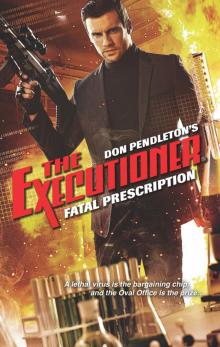 Fatal Prescription
Fatal Prescription Deep Recon
Deep Recon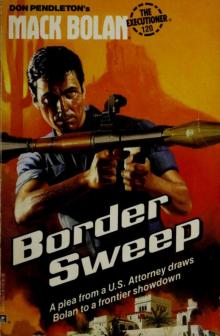 Border Sweep
Border Sweep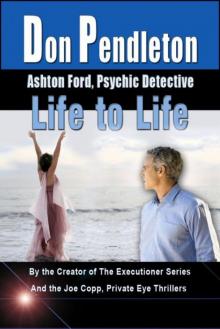 Life to Life
Life to Life Ballistic
Ballistic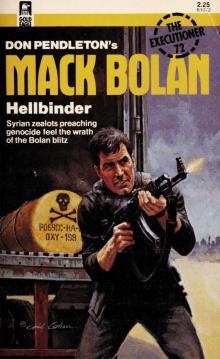 Hellbinder
Hellbinder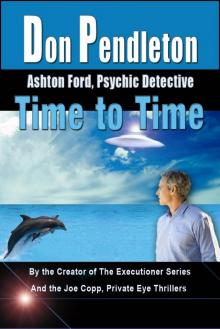 Time to Time: Ashton Ford, Psychic Detective (Ashton Ford Series Book 6)
Time to Time: Ashton Ford, Psychic Detective (Ashton Ford Series Book 6)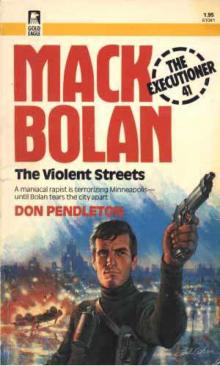 The Violent Streets te-41
The Violent Streets te-41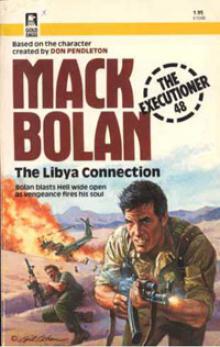 The Libya Connection te-48
The Libya Connection te-48 Cartel Clash
Cartel Clash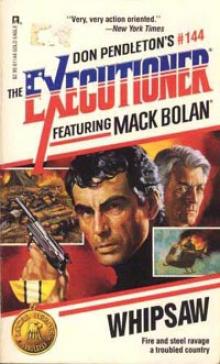 Whipsaw te-144
Whipsaw te-144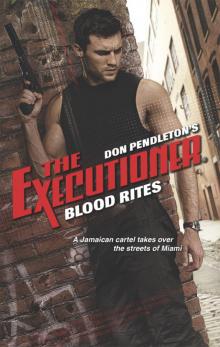 Blood Rites
Blood Rites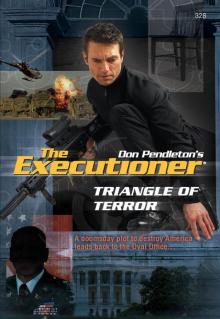 Triangle of Terror
Triangle of Terror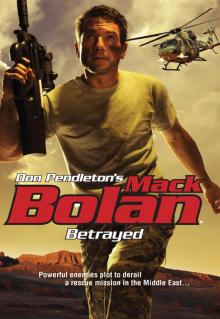 Betrayed
Betrayed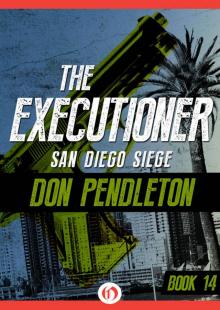 San Diego Siege
San Diego Siege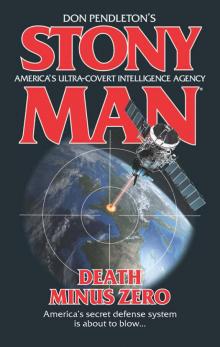 Death Minus Zero
Death Minus Zero Arctic Kill
Arctic Kill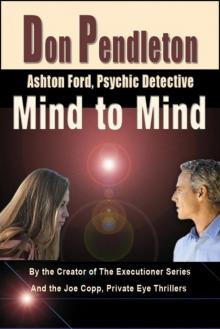 Mind to Mind: Ashton Ford, Psychic Detective
Mind to Mind: Ashton Ford, Psychic Detective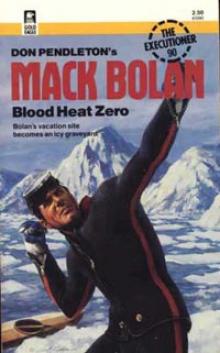 Blood Heat Zero te-90
Blood Heat Zero te-90 Dead Man's Tale
Dead Man's Tale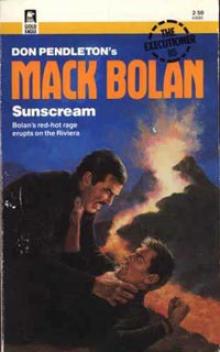 Sunscream te-85
Sunscream te-85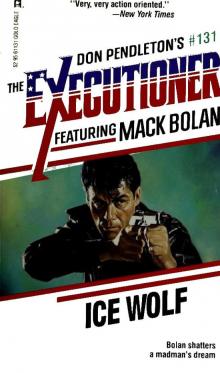 Ice Wolf
Ice Wolf Deadly Contact
Deadly Contact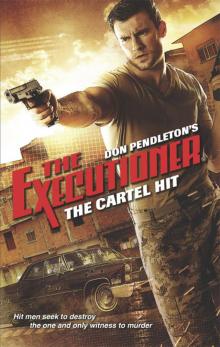 The Cartel Hit
The Cartel Hit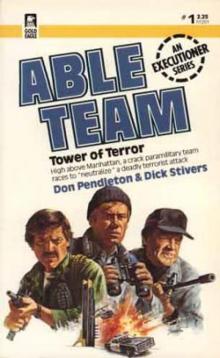 Tower of Terror at-1
Tower of Terror at-1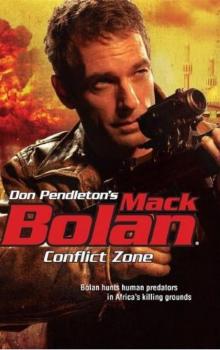 Conflict Zone
Conflict Zone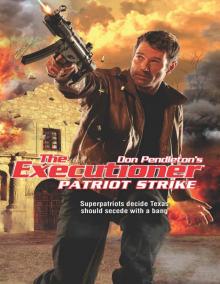 Patriot Strike
Patriot Strike Point Blank
Point Blank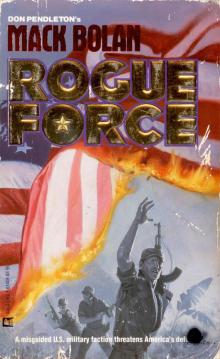 Rogue Force
Rogue Force Patriot Play
Patriot Play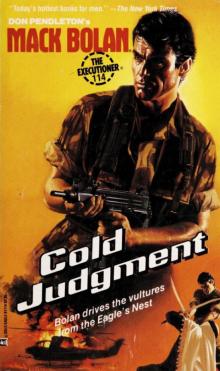 Cold Judgment
Cold Judgment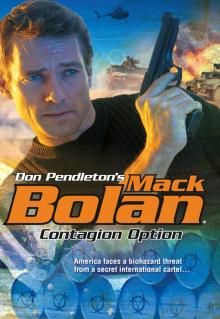 Contagion Option
Contagion Option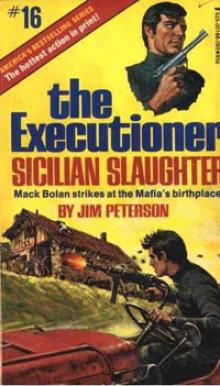 Sicilian Slaughter te-16
Sicilian Slaughter te-16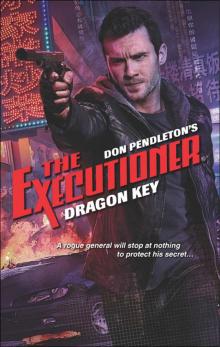 Dragon Key
Dragon Key Terminal Velocity
Terminal Velocity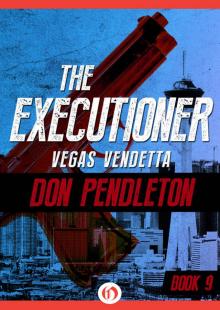 Vegas Vendetta
Vegas Vendetta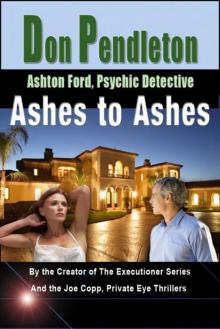 Ashes To Ashes
Ashes To Ashes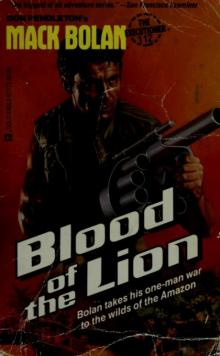 Blood of the Lion
Blood of the Lion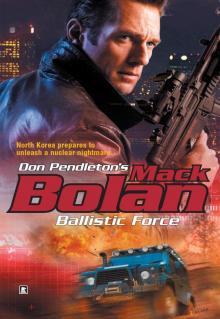 Ballistic Force
Ballistic Force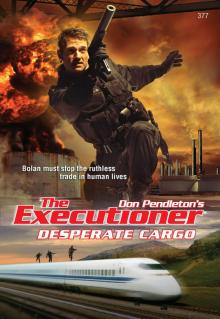 Desperate Cargo
Desperate Cargo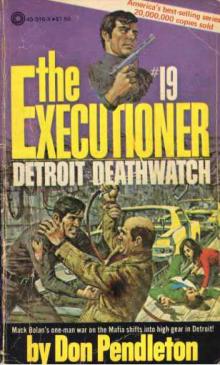 Detroit Deathwatch te-19
Detroit Deathwatch te-19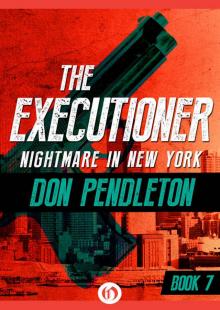 Nightmare in New York
Nightmare in New York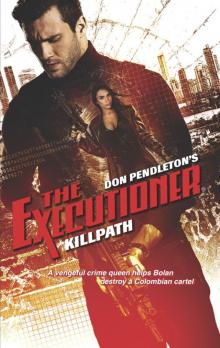 Killpath
Killpath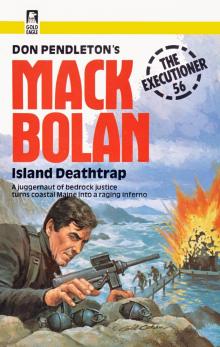 Executioner 056 - Island Deathtrap
Executioner 056 - Island Deathtrap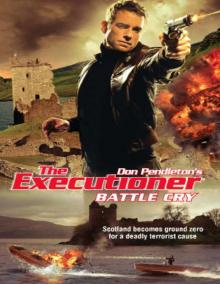 Battle Cry
Battle Cry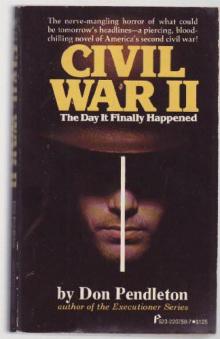 Don Pendleton - Civil War II
Don Pendleton - Civil War II Copp In The Dark, A Joe Copp Thriller (Joe Copp Private Eye Series)
Copp In The Dark, A Joe Copp Thriller (Joe Copp Private Eye Series) China Crisis (Stony Man)
China Crisis (Stony Man)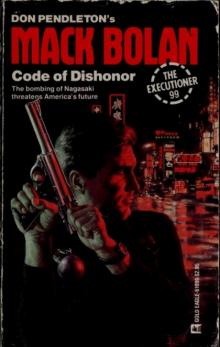 Code of Dishonor
Code of Dishonor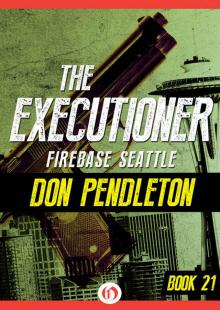 Firebase Seattle
Firebase Seattle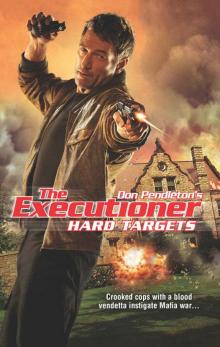 Hard Targets
Hard Targets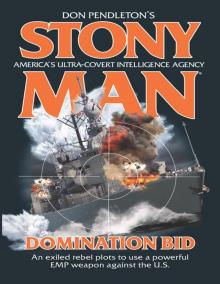 Domination Bid
Domination Bid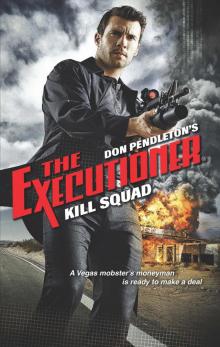 Kill Squad
Kill Squad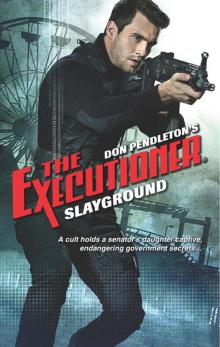 Slayground
Slayground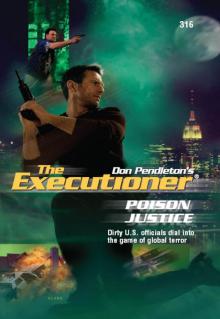 Poison Justice
Poison Justice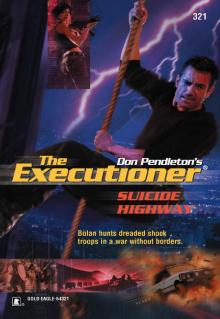 Suicide Highway
Suicide Highway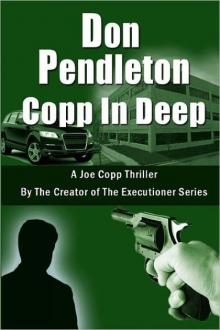 Copp In Deep, A Joe Copp Thriller (Joe Copp Private Eye Series)
Copp In Deep, A Joe Copp Thriller (Joe Copp Private Eye Series)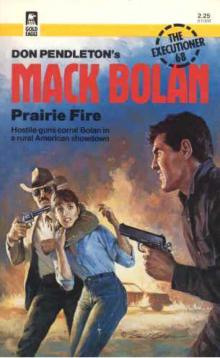 Prairie Fire
Prairie Fire Ninja Assault
Ninja Assault Death Metal
Death Metal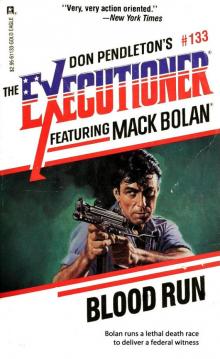 Blood Run
Blood Run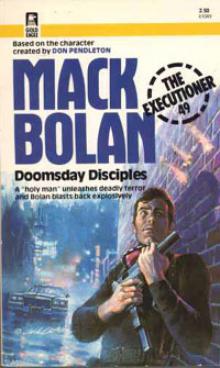 Doomsday Disciples te-49
Doomsday Disciples te-49 Breakout
Breakout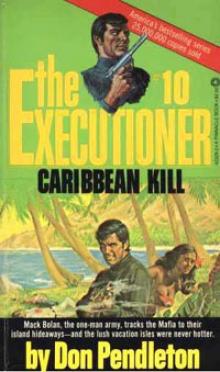 Caribbean Kill te-10
Caribbean Kill te-10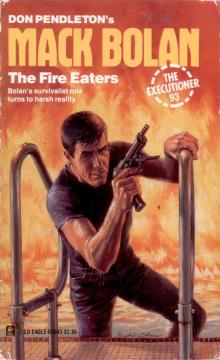 Fire Eaters
Fire Eaters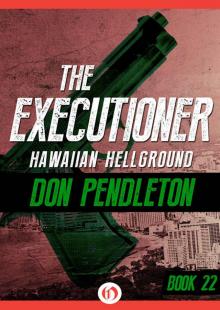 Hawaiian Hellground
Hawaiian Hellground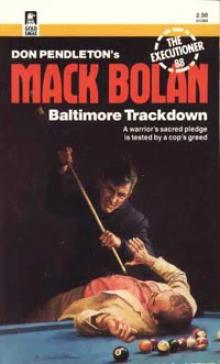 Baltimore Trackdown te-88
Baltimore Trackdown te-88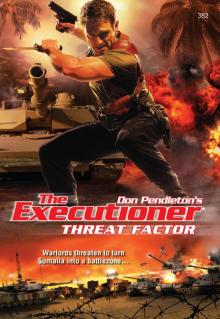 Threat Factor
Threat Factor Don Pendleton's Science Fiction Collection, 3 Books Box Set, (The Guns of Terra 10; The Godmakers; The Olympians)
Don Pendleton's Science Fiction Collection, 3 Books Box Set, (The Guns of Terra 10; The Godmakers; The Olympians) Satan’s Sabbath
Satan’s Sabbath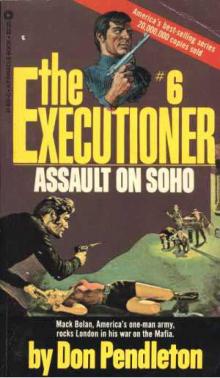 Assault on Soho te-6
Assault on Soho te-6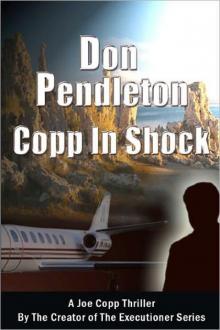 Copp In Shock, A Joe Copp Thriller (Joe Copp Private Eye Series)
Copp In Shock, A Joe Copp Thriller (Joe Copp Private Eye Series) California Hit te-11
California Hit te-11 Chicago Wipe-Out te-8
Chicago Wipe-Out te-8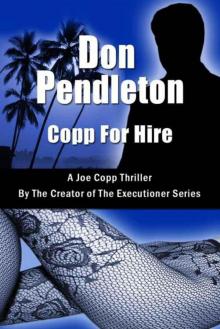 Copp For Hire, A Joe Copp Thriller (Joe Copp Private Eye Series)
Copp For Hire, A Joe Copp Thriller (Joe Copp Private Eye Series)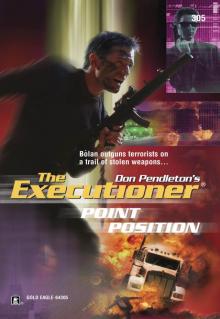 Point Position
Point Position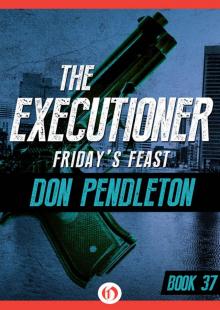 Friday’s Feast
Friday’s Feast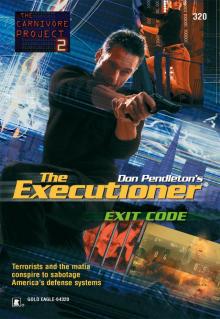 Exit Code
Exit Code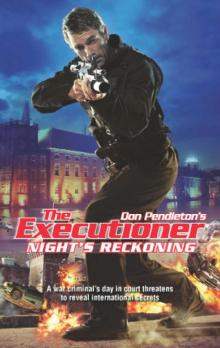 Night's Reckoning
Night's Reckoning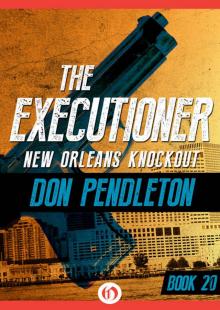 New Orleans Knockout
New Orleans Knockout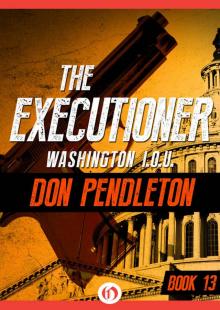 Washington I.O.U.
Washington I.O.U. California Hit
California Hit Blood Vendetta
Blood Vendetta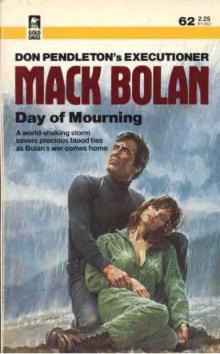 Day of Mourning te-62
Day of Mourning te-62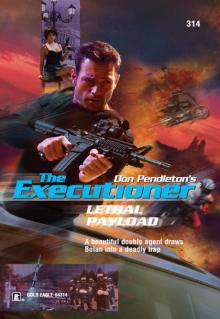 Lethal Payload
Lethal Payload Boston Blitz
Boston Blitz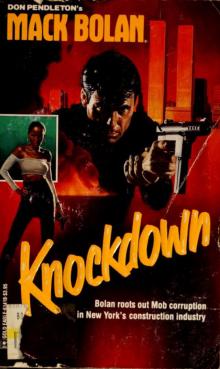 Knockdown
Knockdown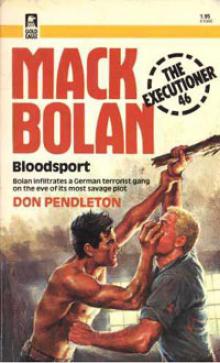 Blood Sport te-46
Blood Sport te-46 Council of Kings te-79
Council of Kings te-79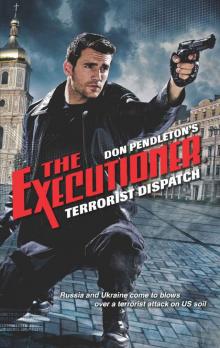 Terrorist Dispatch (Executioner)
Terrorist Dispatch (Executioner)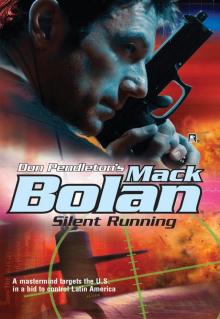 Silent Running
Silent Running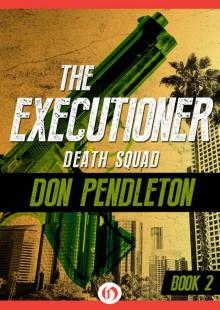 Death Squad
Death Squad Deadly Salvage
Deadly Salvage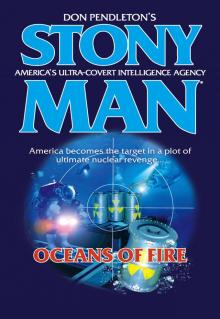 Oceans of Fire
Oceans of Fire Teheran Wipeout
Teheran Wipeout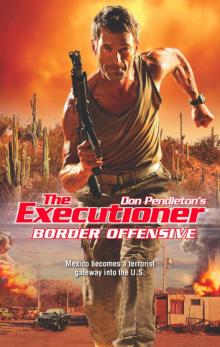 Border Offensive
Border Offensive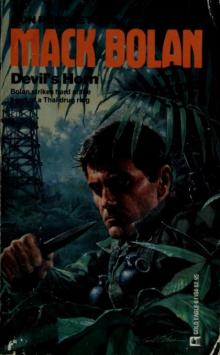 Devil's Horn
Devil's Horn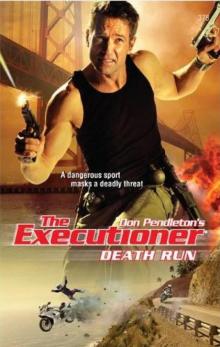 Death Run
Death Run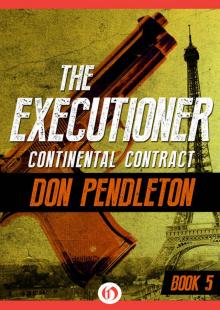 Continental Contract
Continental Contract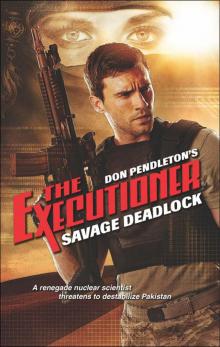 Savage Deadlock
Savage Deadlock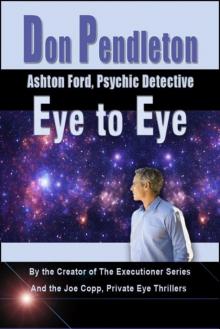 Eye to Eye: Ashton Ford, Psychic Detective
Eye to Eye: Ashton Ford, Psychic Detective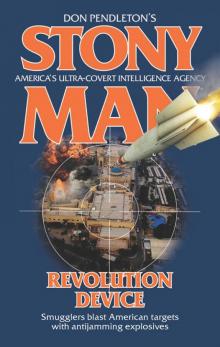 Revolution Device
Revolution Device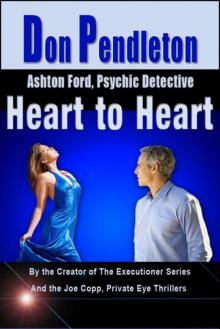 Heart to Heart: Ashton Ford, Psychic Detective
Heart to Heart: Ashton Ford, Psychic Detective Apocalypse Ark
Apocalypse Ark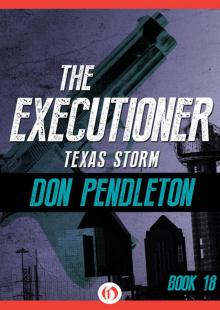 Texas Storm
Texas Storm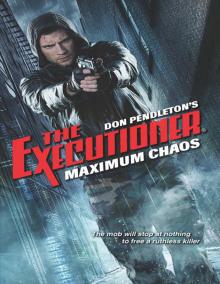 Maximum Chaos
Maximum Chaos Sensor Sweep
Sensor Sweep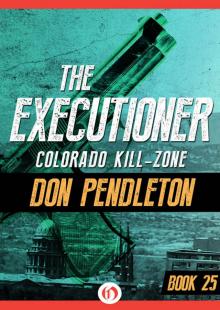 Colorado Kill-Zone
Colorado Kill-Zone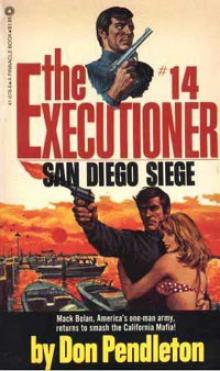 San Diego Siege te-14
San Diego Siege te-14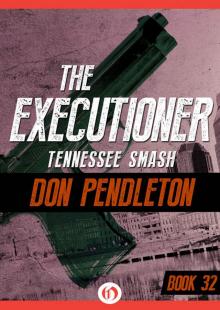 Tennessee Smash
Tennessee Smash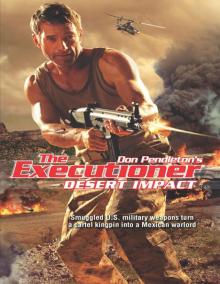 Desert Impact
Desert Impact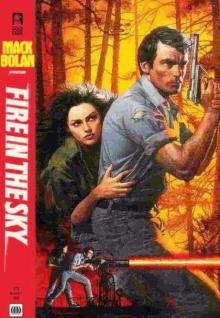 Fire in the Sky
Fire in the Sky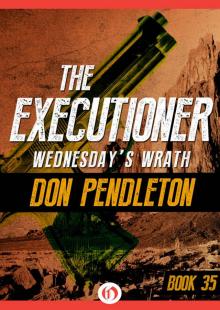 Wednesday’s Wrath
Wednesday’s Wrath Super Bolan - 001 - Stony Man Doctrine
Super Bolan - 001 - Stony Man Doctrine Chain Reaction
Chain Reaction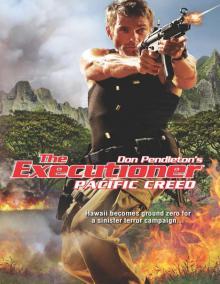 Pacific Creed
Pacific Creed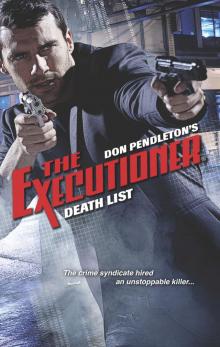 Death List
Death List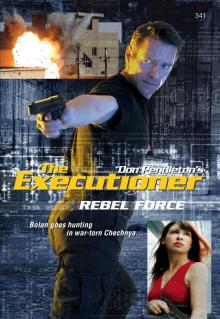 Rebel Force
Rebel Force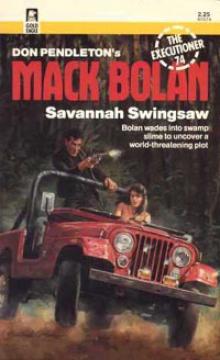 Savannah Swingsaw te-74
Savannah Swingsaw te-74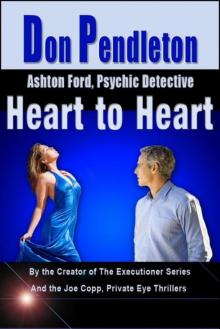 Heart to Heart
Heart to Heart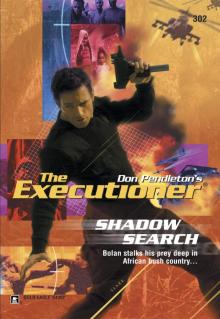 Shadow Search
Shadow Search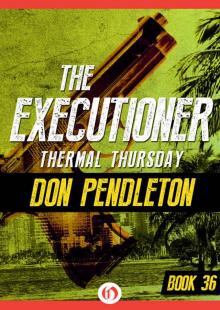 Thermal Thursday
Thermal Thursday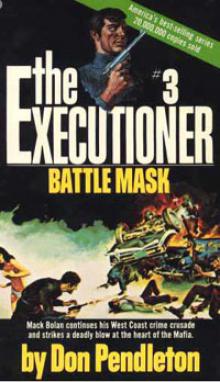 Battle Mask te-3
Battle Mask te-3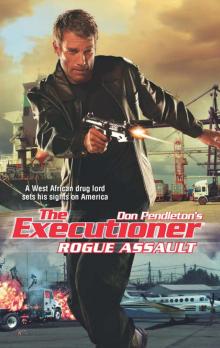 Rogue Assault
Rogue Assault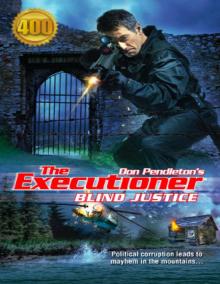 Blind Justice
Blind Justice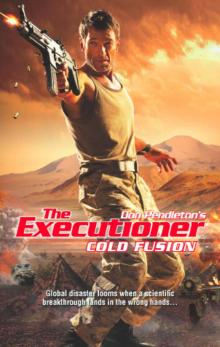 Cold Fusion
Cold Fusion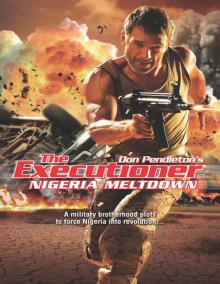 Nigeria Meltdown
Nigeria Meltdown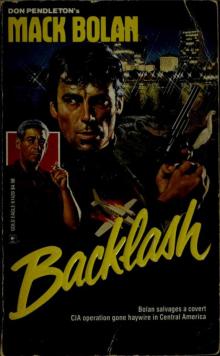 Backlash
Backlash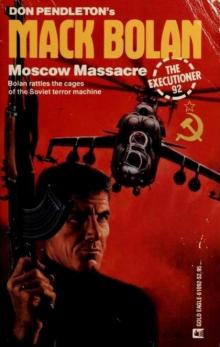 Moscow Massacre
Moscow Massacre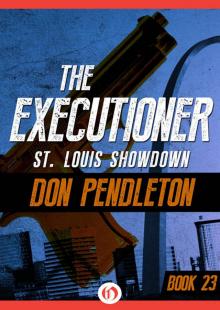 St. Louis Showdown
St. Louis Showdown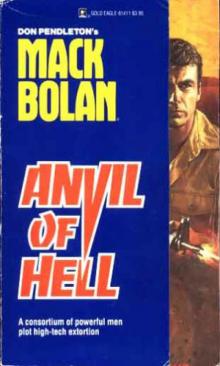 Anvil of Hell
Anvil of Hell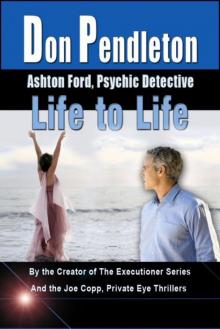 Life to Life: Ashton Ford, Psychic Detective
Life to Life: Ashton Ford, Psychic Detective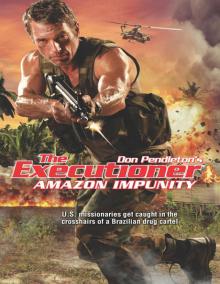 Amazon Impunity
Amazon Impunity Run to Ground te-106
Run to Ground te-106 Save the Children te-94
Save the Children te-94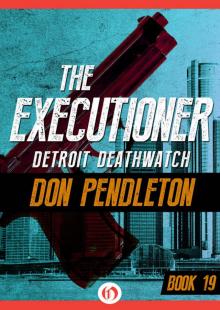 Detroit Deathwatch
Detroit Deathwatch Shadow Hunt
Shadow Hunt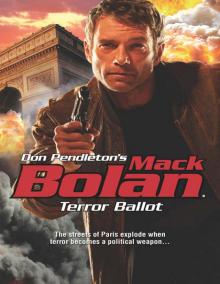 Terror Ballot
Terror Ballot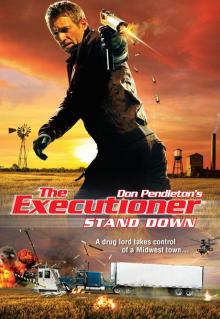 Stand Down
Stand Down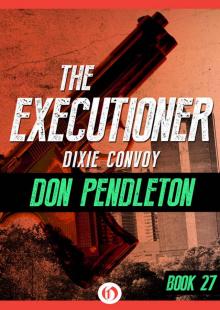 Dixie Convoy
Dixie Convoy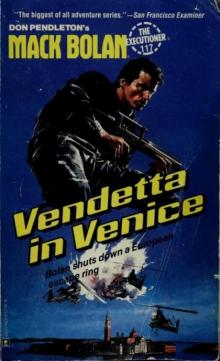 Vendetta in Venice
Vendetta in Venice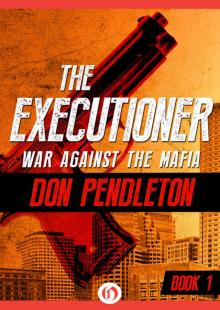 War Against the Mafia
War Against the Mafia Assassin's Tripwire
Assassin's Tripwire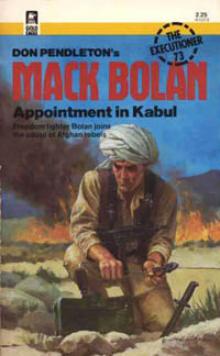 Appointment in Kabul te-73
Appointment in Kabul te-73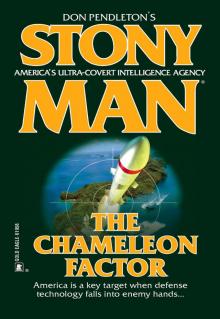 The Chameleon Factor
The Chameleon Factor Pirate Offensive
Pirate Offensive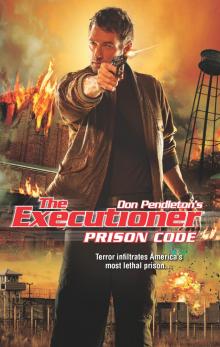 Prison Code
Prison Code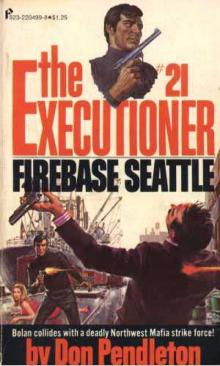 Firebase Seattle te-21
Firebase Seattle te-21 Ground Zero
Ground Zero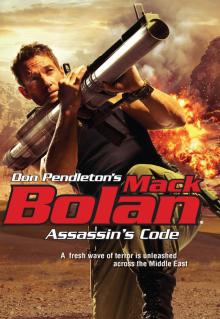 Assassin's Code
Assassin's Code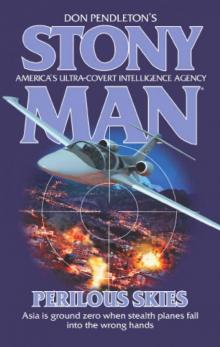 Perilous Skies (Stony Man)
Perilous Skies (Stony Man)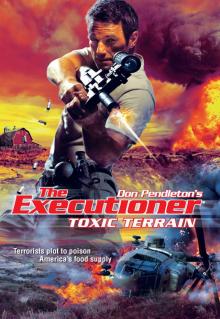 Toxic Terrain
Toxic Terrain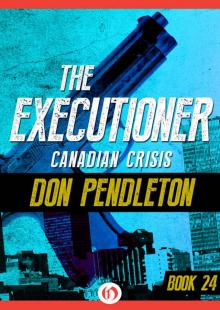 Canadian Crisis
Canadian Crisis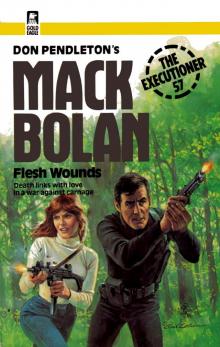 Executioner 057 - Flesh Wounds
Executioner 057 - Flesh Wounds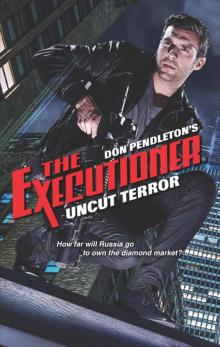 Uncut Terror
Uncut Terror War Everlasting (Superbolan)
War Everlasting (Superbolan)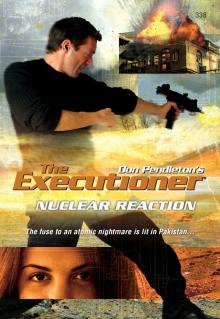 Nuclear Reaction
Nuclear Reaction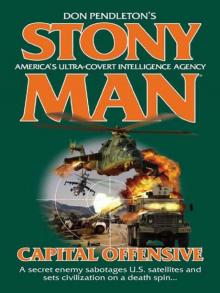 Capital Offensive (Stony Man)
Capital Offensive (Stony Man)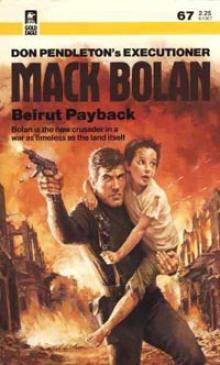 Beirut Payback te-67
Beirut Payback te-67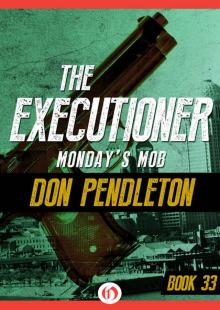 Monday’s Mob
Monday’s Mob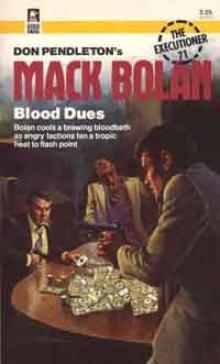 Blood Dues te-71
Blood Dues te-71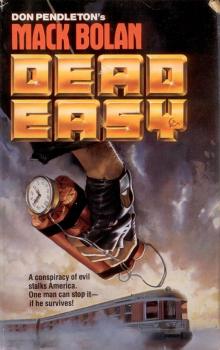 Dead Easy
Dead Easy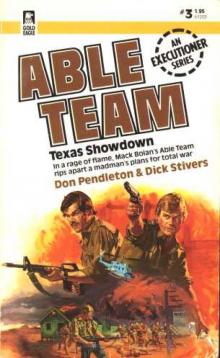 Texas Showdown at-3
Texas Showdown at-3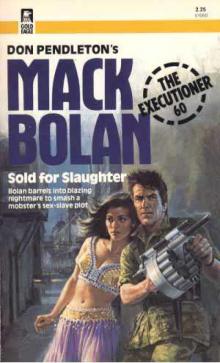 Sold for Slaughter
Sold for Slaughter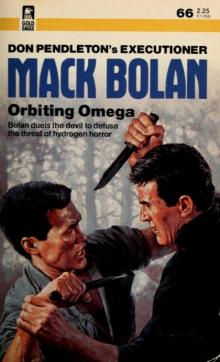 Orbiting Omega
Orbiting Omega Copp On Ice, A Joe Copp Thriller (Joe Copp Private Eye Series)
Copp On Ice, A Joe Copp Thriller (Joe Copp Private Eye Series)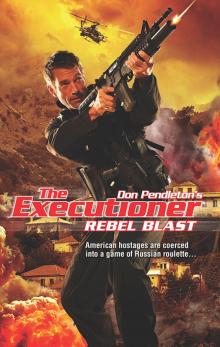 Rebel Blast
Rebel Blast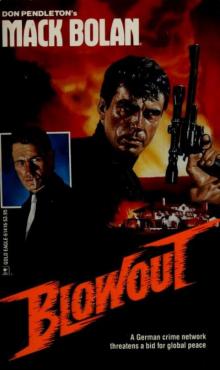 Blowout
Blowout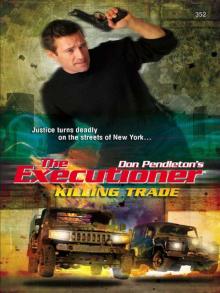 Killing Trade
Killing Trade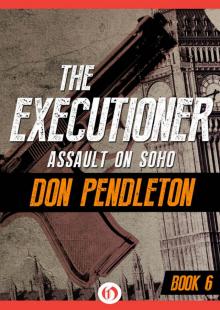 Assault on Soho
Assault on Soho Season of Slaughter
Season of Slaughter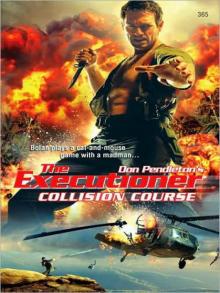 Collision Course
Collision Course Shock Waves
Shock Waves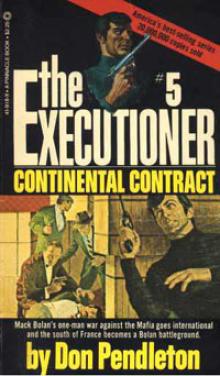 Continental Contract te-5
Continental Contract te-5 Dead Reckoning
Dead Reckoning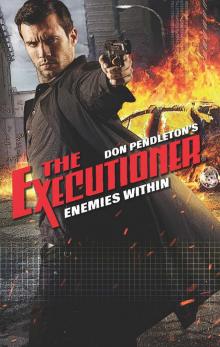 Enemies Within
Enemies Within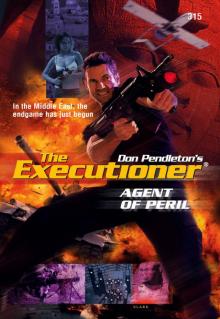 Agent of Peril
Agent of Peril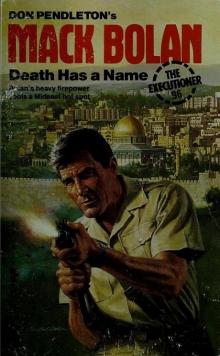 Death Has a Name
Death Has a Name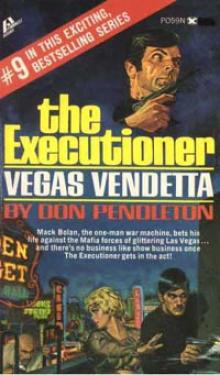 Vegas Vendetta te-9
Vegas Vendetta te-9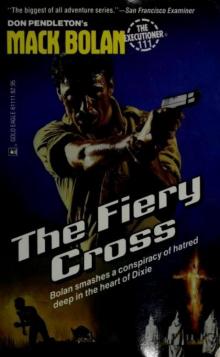 The Fiery Cross
The Fiery Cross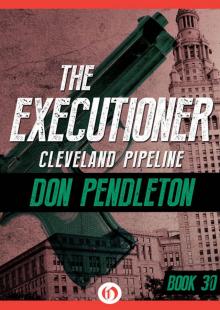 Cleveland Pipeline
Cleveland Pipeline Armed Response
Armed Response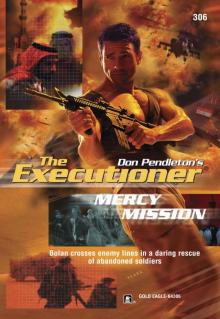 Mercy Mission
Mercy Mission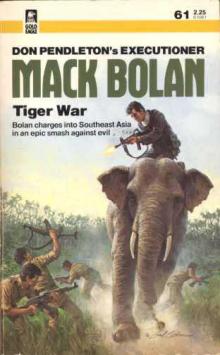 Tiger War te-61
Tiger War te-61 Renegade Agent te-47
Renegade Agent te-47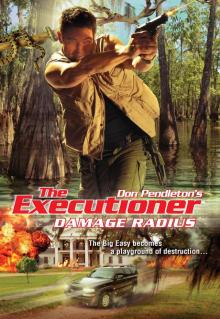 Damage Radius
Damage Radius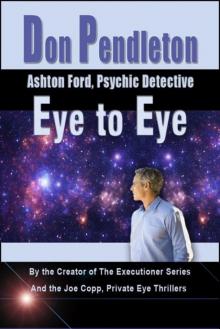 Eye to Eye
Eye to Eye Acapulco Rampage
Acapulco Rampage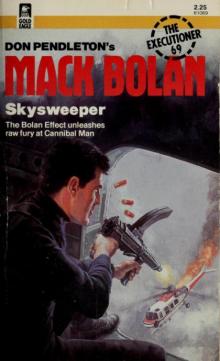 Skysweeper
Skysweeper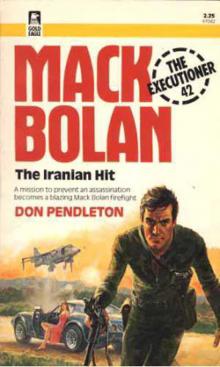 The Iranian Hit te-42
The Iranian Hit te-42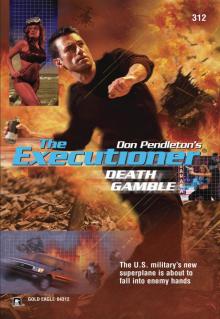 Death Gamble
Death Gamble Rebel Trade
Rebel Trade Predator Paradise
Predator Paradise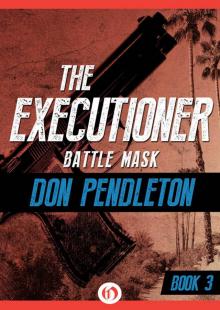 Battle Mask
Battle Mask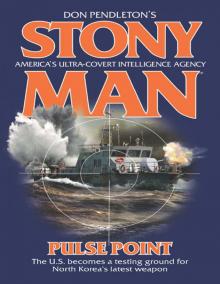 Pulse Point
Pulse Point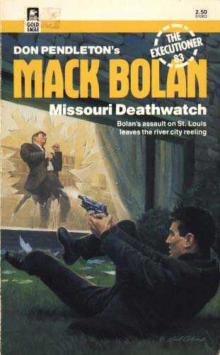 Missouri Deathwatch
Missouri Deathwatch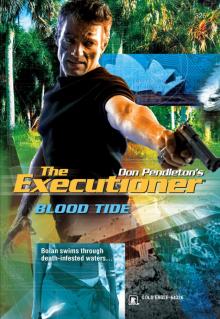 Blood Tide
Blood Tide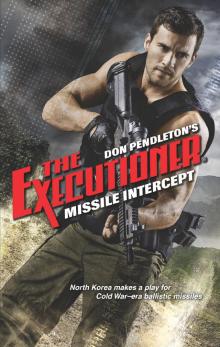 Missile Intercept
Missile Intercept Jersey Guns
Jersey Guns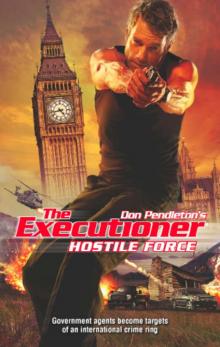 Hostile Force
Hostile Force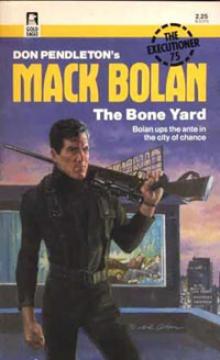 The Bone Yard te-75
The Bone Yard te-75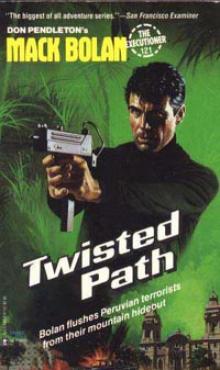 Twisted Path te-121
Twisted Path te-121 Mind to Mind
Mind to Mind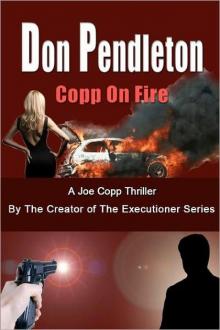 Copp On Fire, A Joe Copp Thriller (Joe Copp, Private Eye Series)
Copp On Fire, A Joe Copp Thriller (Joe Copp, Private Eye Series)